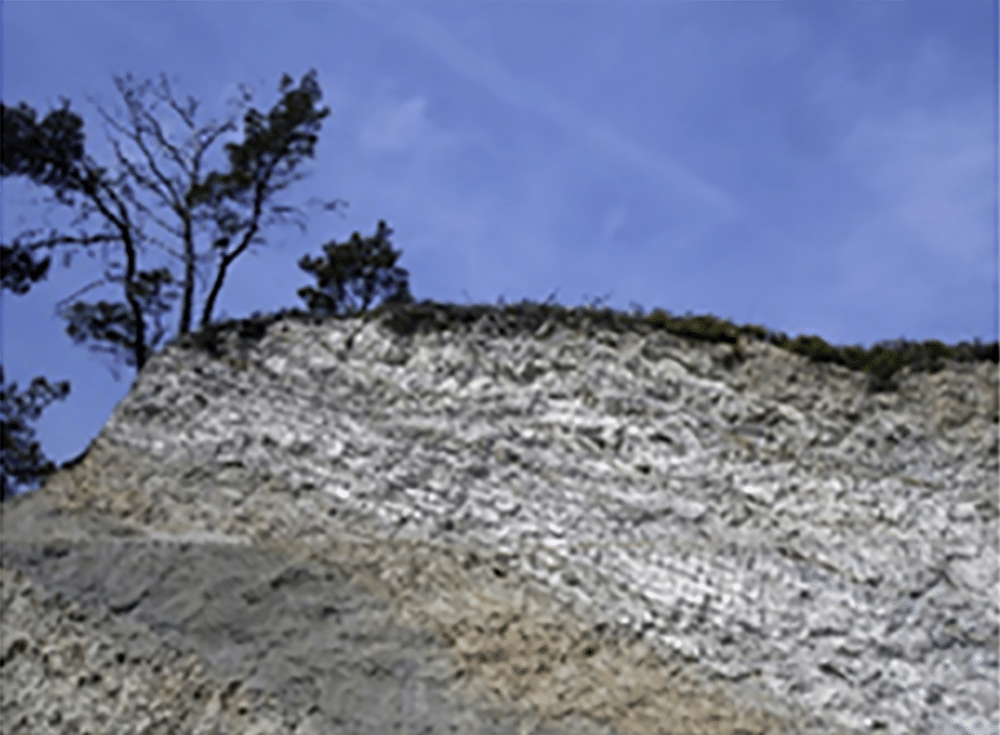Medicinal Earths

Medicinal clays, known in antiquity as earths, appear frequently in ancient pharmacological recipes. However, their precise mineral composition and mechanisms of action as therapeutics remain subjects of continuing investigation.
Over a period of fifteen years (1998-2013), Effie Photos-Jones and Allan Hall, together with colleagues from the University of Glasgow and in Greece, carried out geo-archaeological work on several islands in the Aegean to locate the place of the extraction of local clay deposits (earths) perceived by antiquity as therapeutic. The islands in question are Samos, Lemnos, Melos and Kimolos and their earths, the Samian Earth, Lemnian Earth, Melian and Kimolian Earths.
During that time our geo-archaeology research team undertook extensive geological assessment of the areas, as well as chemical and mineralogical analyses of the samples collected; at the same time, we looked for evidence for mining and processing of these deposits at different times in antiquity. The field work supported by a grant by the British Academy led to a series of publications and two books.
In the past few years (2016-present) our research agenda shifted towards the study of these natural minerals as therapeutics, in an attempt to delve deeper into their pharmacological attributes. We began by testing them for their bioactivity as antibacterials against common pathogens. At the same time, we started sampling pellets of these medicinal earths in museum collections dating largely from the 16th to the 19th century (see photo above) and carried out not only compositional analyses but bioactivity testing as well.
Kimolian Earth
Kimolos, a small island in the southwestern Cyclades near Melos, is characterized by volcanic rocks but lacks any recent volcanic activity. Kimolian Earth was first mentioned by Theophrastus, who briefly noted its use for degreasing cloth. It was also used as a ‘soap’ in public baths, in 4th c BCE Athens.
Kimolian Earth is identified as a form of fuller’s earth, a clay traditionally used for cleaning cloth by absorbing oils and grease. This clay, primarily composed of montmorillonite, is now widely known as bentonite. Historically, fuller’s earth played a significant role in preparing wool for spinning and dyeing, as well as in cosmetics and household cleaners. Extensive hydrothermal alteration has produced significant deposits of bentonite on the island, which were mined until relatively recently. Additionally, zeolitic tuffs containing mordenite and clinoptilolite are found in the southwestern parts of the island, though they likely had limited use in antiquity. Today, bentonite remains in demand for various industrial purposes, including drilling muds and cat litter.
In antiquity, fuller’s earth also had medicinal applications. Strabo, Dioscorides, and other ancient sources documented its use for treating tumors, inflammation, and wounds. It was sometimes incorporated into eye salves and used as a styptic for stopping bleeding. By the 18th and 19th centuries, travellers to the island compared Kimolian Earth, to the fuller’s earth of Bedfordshire.
Samian Earth

Samian Earth was a medicinal clay from the island of Samos in the East Aegean. Historically used as an eye salve, it has been traditionally equated with kaolin. However, our findings suggest that its composition was likely enriched with local borates found near bentonitic clays. Even at low concentrations, boron compounds within these clays were shown to reduce bacterial colonies of Staphylococcus aureus and Pseudomonas aeruginosa, supporting the hypothesis that the healing properties of ancient medicinal earths were directly linked to their unique mineralogical compositions Experimental results showed that even a few hundred ppms of boron/boric acid in the Samos bentonitic clays can have a significant effect on the reduction of the above bacterial colonies.
References
Venieri, D., Gounaki, I., Christidis, G. E., Knapp, C. W., Bouras-Vallianatos, P. and Photos-Jones, E. (2020) Bridging the gaps: bole and Terra Sigillata as artefacts, as simples and as antibacterial clays. Minerals, 10(4), e348. (doi: 10.3390/min10040348) (PMID:32724664) (PMCID:PMC7115821)
Photos-Jones, E. (2018) From mine to apothecary: an archaeo-biomedical approach to the study of the Greco-Roman lithotherapeutics industry. World Archaeology, 50(3), pp. 418433. (doi: 10.1080/00438243.2018.1515034
Photos-Jones, E. , Keane, C., Jones, A.X., Stamatakis, M., Robertson, P., Hall, A.J. and Leanord, A. (2015) Testing Dioscorides’ medicinal clays for their antibacterial properties: the case of Samian Earth. Journal of Archaeological Science, 57, pp. 257-267. (doi: 10.1016/j.jas.2015.01.020)
Photos-Jones, E. and Hall, A. J. (2011) Lemnian Earth and the Earths of the Aegean: An Archaeological Guide To Medicines, Pigments And Washing Powders. Potingair Press: Glasgow. ISBN 9780956824004
